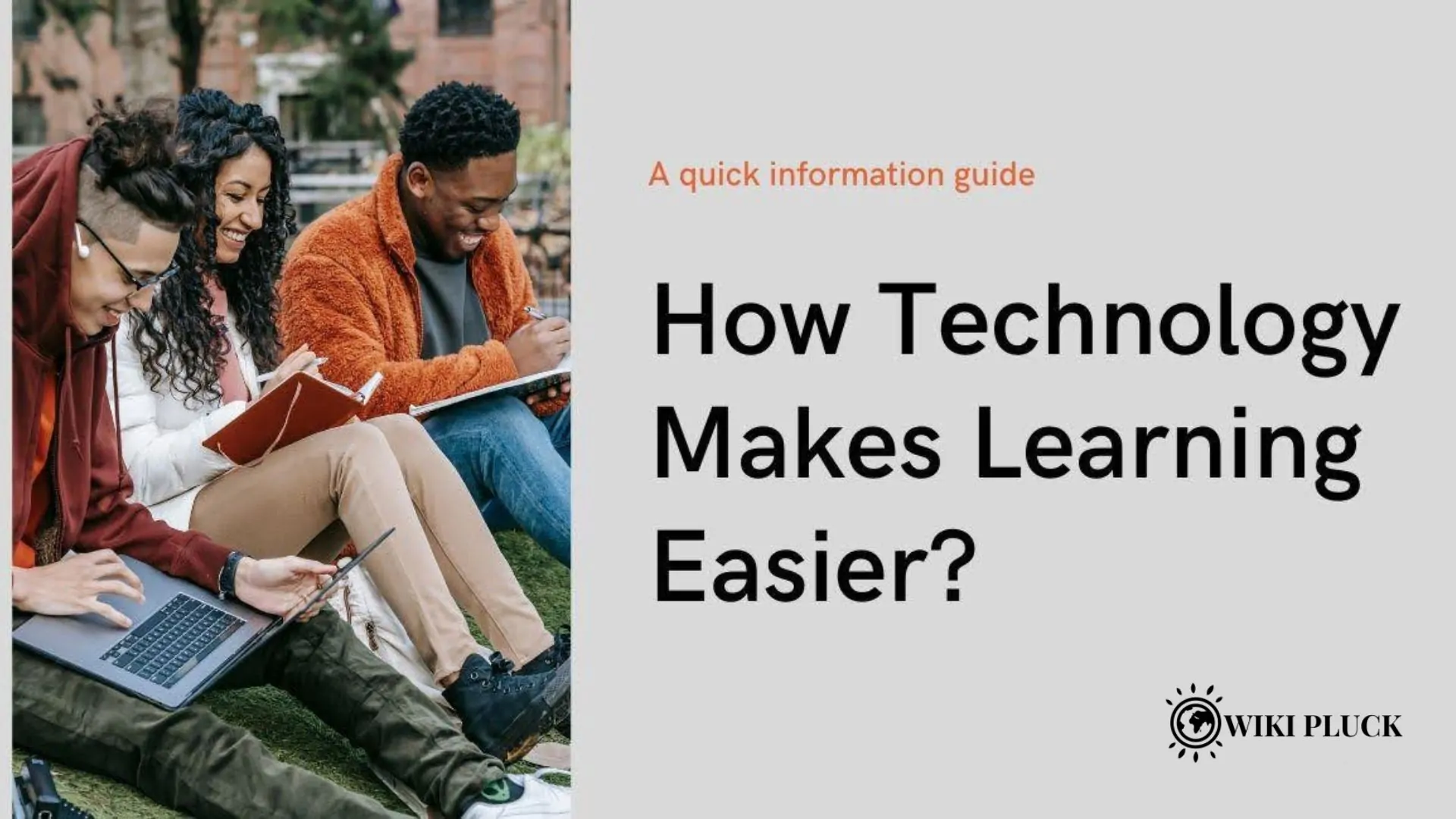Recall the traditional classroom: a teacher at the front, lecturing away, and the students just taking notes.
Learning has become rapid, with technology changing how teachers learn with their students and how they absorb knowledge.
Technology helps in teaching, making them engaging and accessible to every student through interactive tools or personalized learning platforms.
Schools and teachers have also seen the role these tools play in shaping a modern education experience through which students can reach their full potential.
This article will show how technology can make learning more accessible for students. We will explore technology’s advantages to teachers and students, making it easier for both.
Personalized Learning
One of the significant challenges in education today is the styles and paces of learning.
With technological advancements, one can learn by personalizing.
Adaptive learning platforms use AI to assess how a student learns and then tailor educational content to meet their needs.
For example, for students who struggle with algebra but excel in geometry, the software will adjust its approach to give more time and resources to the subject that needs improvement.
This would mean that there is no more one-size-fits-all.
The primary advantage of assessment tools for teachers is their ability to automate the evaluation of projects, homework, and test papers. These tools dynamically adjust difficulty levels based on individual performance and provide personalized dashboards that allow students to track their progress. As a result, students can learn at their own pace.
Personalized learning is one of the key benefits of using technology in education. Technology is helping teachers to provide education in a way that was not possible in traditional education practices.
This personalization does not overwhelm the student but instead empowers that sense of control over his learning process.
Also Read: Exploring the 5 Essential Components of School Management Systems
Interactive Learning Tools
Traditional textbooks are dull. When a learner somehow manages to interact with the content, the learner only gets the information but not skills.
Interactive learning tools, including educational apps, simulations, and gamified platforms, bring about this change in how students interact with content.
For instance, apps like Kahoot or Quizlet make learning more fun by turning concepts into games where students compete against each other while reinforcing their understanding of critical concepts.
Besides games, interactive simulations in science and other subjects help students learn virtual experiments without a lab.
This experiential approach not only grasps the attention of students but also helps them understand topics much better than static content. The more excited the students become, the more they will retain what they learn.
Collaborative Learning
It helps individual learning and promotes teamwork among students.
Digital tools, such as cloud-based Classrooms, enable students to collaborate on different projects even when separated by miles. It then becomes easy for students to collaborate in real time in the classroom or outside of it.
The collaborative tools break geographical barriers and allow students from many schools or countries to work on joint projects.
That enriches learning experiences and aims to enhance a student’s soft skills related to communication, teamwork, and solving problems.
Such group work becomes all the more organized and productive when they can collaborate over shared documents, track their progress, and communicate effectively through integrated platforms.
Instant Feedback and Assessment
The old days of waiting for weeks for test results are over.
The technology in education allows for real-time feedback through automated grading systems.
It gives the teacher ample opportunities to immediately assess the student’s performance and adjust their teaching style or method.
Instant feedback equips students with an idea about where they are. Since they have yet to learn it, mastering this concept or that topic will no longer take time.
Tools such as Socrative or Google Forms allow teachers to collect immediate student feedback, identify problem areas, and make adjustments.
It also enables the students to correct mistakes on the same day, which can foster learning itself.
Also Read: Revolutionizing education with student-tutor platforms for seamless learning.
Accessibility and Inclusion
Perhaps one of the most influential aspects of technology in education is the capability to make learning more accessible.
For example, students who are disabled or who live in remote areas benefit from tools that remove physical and geographical barriers to learning.
For example, students with visual impairments can now gain access to digital content because there are screen readers available. In contrast, students of other languages can easily follow the content because of subtitles and translation services.
Online learning platforms have made it possible for education to move beyond walls. A student may be the remotest in the countryside. Still, they can participate in virtual classes, get quality content and interact with teachers and peers like any other student.
Technology now means that each student is assured of having the same opportunities.
Engagement Through Multimedia
There are valid reasons why multimedia content is so strong in learning.
Not every learner learns in the same way, and, at times, subjects will live by videos, animations, and podcasts in ways no textbooks can ever accomplish.
For instance, anything about the water cycle from a video or an animated explanation of events during history will be more precise and interesting than learning it through mere reading.
YouTube and TED-Ed are significant resources providing robust educational material and striking visual and auditory learning.
Most classroom teachers actually use such multimedia-based approaches to give proper well-rounded education to all their students regardless of their learning ability.
This versatility allows teachers to make the best instructional methods based on the needs of a diverse classroom.
Enhancing Interactive Learning with SENSES Smart Whiteboard
Imagine a tool that integrates all these technological advantages into a powerful teaching device. SENSES Smart Whiteboard perfectly brings this together in its design.
It provides highly interactive and engaging lessons to cover all styles through an AI-powered platform.
Featuring a 4K Ultra HD display, the SENSES Smart Whiteboard guarantees that every visual, from complex math problems to beautifully coloured historical maps, would be as transparent as possible.
Its multi-touch capability allows students to touch the board simultaneously to facilitate collaboration and discovery. The real-time multi-language translation feature helps break language barriers and avoid exclusion in classes of different languages and cultures.
Quick search feature helps teachers reach out while moving to content resources- videos and even quizzes- to spice up the flow of lessons without causing a commotion.
More than 8,000 teachers and over 70,000 educational institutions have successfully adopted the SENSES Smart Whiteboard, encouraging students in a new way.
Visit SENSES official website and schedule a demo today and see how this tool can bring your classroom into the modern age.
Also Read: 8 Benefits of Private Tutoring for High School Students
Conclusion
Since technology is no longer an add-on component of education but rather a core part of how students learn today, it transforms the face of education for the better through personalized learning platforms, collaborative tools, or interactive whiteboards.
By adopting such tools, educators can create more inclusive, engaging, and effective learning environments for every learner.
That is why you can be confident that your classroom is equipped with intelligent technology such as the SENSES Smart Whiteboard, which catches up with meaningful learning experiences and leads.
As the driving force behind WikiPluck, I am dedicated to curating and sharing insightful knowledge across a spectrum of subjects. From technology trends to Business advice, WikiPluck strives to be a go-to resource for those seeking to enhance their understanding and make informed decisions.
Join me on this journey of discovery and enlightenment as we pluck the gems of wisdom from the vast landscape of knowledge.

